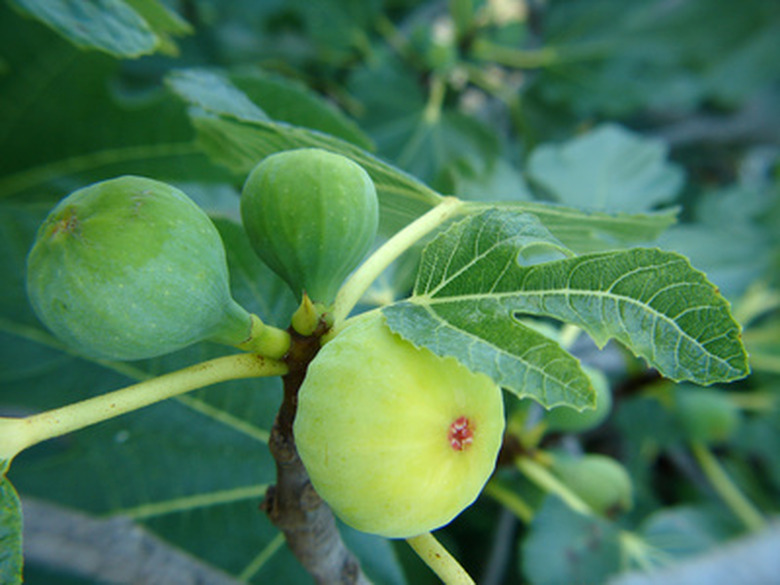Texas Fruit Tree Planting Information
Planting a fruit tree in Texas might be the easiest part of the whole process, despite the rocky clay soils found in most of the state. It's researching the fruit varieties, amending the soil (or creating a raised bed), and all the maintenance after planting that really require work. But if you choose a type of fruit tree suited to your region, as well as a variety with natural disease and pest resistance, you can settle in to planting your orchard with confidence.
Types
Citrus grows in the Rio Grande Valley of South Texas and along the Gulf Coast, while figs grow well into Central Texas. Pear trees do well from Central Texas through the north and east. While apples, plums and peaches will grow in Texas, they're some of the hardest to cultivate because they need fantastic soil and are susceptible to a daunting range of pests and diseases.
Transplant Season and Size
Purchase and plant fruit trees during the winter while they're dormant. During this time, the trees undergo the least amount of stress from being dug up from the nursery, shipped and transplanted in your orchard. The exception is citrus trees, since they're not shipped bare-root. Doug Welsh's Texas Garden Almanac recommends selecting apples, plums, persimmons and peaches that are between 3 and 5 feet tall. Citrus and figs should only be between 1 and 3 feet tall when you purchase them.
- Planting a fruit tree in Texas might be the easiest part of the whole process, despite the rocky clay soils found in most of the state.
Soil Requirements
Figs, pears, persimmons and citrus will tolerate most soils, though there should be adequate drainage to avoid root rot. Apples suffer in the rocky alkaline soils that cover most of Texas. Plums and peaches also need rich soil that drains well, at least 3 feet deep. Find out how well the soil drains by digging a hole 1 foot wide and 2 feet deep, then filling it with water. If it drains in less than six hours, you're doing well. If it takes between six and 24 hours, you may have a problem. More than 24 hours, and you'll need a raised bed to grow fruit there.
- Figs, pears, persimmons and citrus will tolerate most soils, though there should be adequate drainage to avoid root rot.
- Plums and peaches also need rich soil that drains well, at least 3 feet deep.
Temperature Requirements
Peaches need a certain number of cold days per year, called chilling hours, to come out of dormancy properly and set fruit. Citrus, on the other hand, can't tolerate freezing temperatures. In areas prone to freezes, they must be grown in pots and moved indoors during winter, or limited to dwarf varieties that can be covered during freezes with a lamp placed underneath the covering for additional heat. Figs don't tolerate freezes well either, and should be grown in bush form in colder regions of Texas so they can be covered during winter.
Other Notes
Bare-root fruit trees should be trimmed at planting. According to Doug Welsh's Texas Garden Almanac, trimming the main trunk 12 inches and the lateral branches 6 inches should suffice. Mulch fig trees heavily to keep the soil moisture even so they don't drop unripe fruit. Although there are many persimmon species native to Texas, the oriental varieties are known for being fleshier and less astringent. Before planting apples and peaches, make sure you'll have time for all the spraying for pests and fungus, as well as fruit thinning that you'll have to do.
- Peaches need a certain number of cold days per year, called chilling hours, to come out of dormancy properly and set fruit.
- Figs don't tolerate freezes well either, and should be grown in bush form in colder regions of Texas so they can be covered during winter.
References
- "Doug Welsh's Texas Garden Almanac"; Doug Welsh, Aletha St. Romain; 2007
